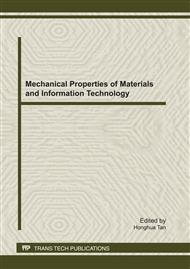p.444
p.451
p.456
p.461
p.467
p.473
p.480
p.487
p.492
Remediation of Eutrophic Water Body by Zoobenthos
Abstract:
To study the temperature factor affecting nutrient release of Cipangopludina Chinensis, laboratory simulation experiments were carried out, and other traits of Cipangopludina Chinensis, such as the effects of nitrogen cycling, phosphorus cycling, suspended substance in water column. Results showed that temperature had great influence on nutrient release of Cipangopaludina Chinensis. The release rate of total nitrogen and dissolved nitrogen increased, but not clear. The release rate of total phosphorus and dissolved Phosphorus increased greatly. When the temperature rose from 8 °Cto15 °C and 35 °C, the release rate of total nitrogen was increased by 5.71% and 23.43%;The release rate of dissolved nitrogen was increased by 6.76% and 17.57%. While the release rate of total phosphorus was increased by 92.60% and 208.35%,the release rate of dissolved phosphorus was increased by 2.25% and 110.17%. At the same situation, the release rate of ammonia nitrogen was increased by 1.89% and 26.55%, The release rate of phosphate was increased by14.27% and 225.96%, but temperature had little influence on nitrate nitrogen. In addition, temperature had little influence on suspended substance(P>0.05). In a word, zoobenthos play a significant role on eutrophic purification, which provide reference for lake eutrophication control.
Info:
Periodical:
Pages:
473-479
Citation:
Online since:
September 2011
Authors:
Keywords:
Price:
Сopyright:
© 2012 Trans Tech Publications Ltd. All Rights Reserved
Share:
Citation:


